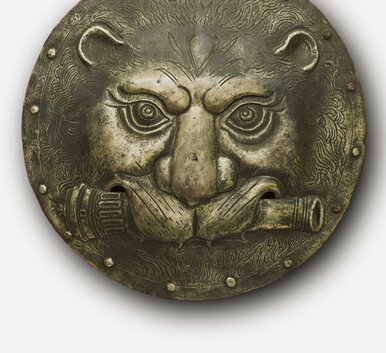Pyotr Grigoryevich Kakhovsky was born in Smolensk and came from an impoverished noble family. He began military service in 1816 in the Life Guards Jaeger Regiment. For unworthy behavior, debts and “lazy service”, Alexander I demoted junker Kakhovsky to soldier and sent him to the Caucasus. There Kakhovsky distinguished himself in battles and a year later became a lieutenant. Four years later, he retired due to poor health; having no regular income, he often lived in want.
In 1825, on his way to Greece to fight for independence, he met Kondraty Ryleyev in St. Petersburg. The latter saw in the lieutenant an “ardent temperament”, dedication and love of freedom, and accepted him as a member of the Northern Secret Society of the Decembrists.
When he officially joined the Decembrists, Pyotr Grigoryevich talked a lot about the need to exterminate the imperial family and establish a republican system. As the only one of the rebels who did not have family ties and friends in high places, it was decided that he would be the one to commit the regicide.
On the appointed day, Kakhovsky declared that he personally had nothing against Nicholas I and would not kill him. Nevertheless, when he came to the Senate Square, he fired almost point-blank at the St. Petersburg Governor General Mikhail Andreyevich Miloradovich: the governor had been trying to change the minds of the rebels and had already begun to bring them over to his side. Colonel Nikolay Karlovich Sturler was killed by Kakhovsky’s second shot. Kakhovsky used the pistol presented in the exhibition.
During the investigation, the Decembrist said a lot of unflattering things about the state system and the emperors and was sentenced to be hanged along with the instigators of the uprising.
Before the execution, four other sentenced prisoners — Kondraty Fyodorovich Ryleyev, Mikhail Pavlovich Bestuzhev-Ryumin, Sergey Ivanovich Muravyov-Apostol and Pavel Ivanovich Pestel — embraced each other and said their goodbyes, but no one approached Pyotr Kakhovsky. Even they did not forgive him for the murder of the much beloved Miloradovich.
The flintlock pistol presented in the exhibition was called the “Russian cavalry pistol”, as it was in service with these troops. The development of the model marked the shift in the ammunition of the Russian army to the “7-line” (17.7 mm) caliber. The design for the prototype of this weapon was based on a flintlock pistol of the 1798 model.
These pistols were characterized by a low rate of fire, and therefore soldiers carried two of them. They were stored in front of the saddle in holsters (special bags), which were covered with cloth fabric. The ramrod and bullets were kept in a cartridge box.
In 1825, on his way to Greece to fight for independence, he met Kondraty Ryleyev in St. Petersburg. The latter saw in the lieutenant an “ardent temperament”, dedication and love of freedom, and accepted him as a member of the Northern Secret Society of the Decembrists.
When he officially joined the Decembrists, Pyotr Grigoryevich talked a lot about the need to exterminate the imperial family and establish a republican system. As the only one of the rebels who did not have family ties and friends in high places, it was decided that he would be the one to commit the regicide.
On the appointed day, Kakhovsky declared that he personally had nothing against Nicholas I and would not kill him. Nevertheless, when he came to the Senate Square, he fired almost point-blank at the St. Petersburg Governor General Mikhail Andreyevich Miloradovich: the governor had been trying to change the minds of the rebels and had already begun to bring them over to his side. Colonel Nikolay Karlovich Sturler was killed by Kakhovsky’s second shot. Kakhovsky used the pistol presented in the exhibition.
During the investigation, the Decembrist said a lot of unflattering things about the state system and the emperors and was sentenced to be hanged along with the instigators of the uprising.
Before the execution, four other sentenced prisoners — Kondraty Fyodorovich Ryleyev, Mikhail Pavlovich Bestuzhev-Ryumin, Sergey Ivanovich Muravyov-Apostol and Pavel Ivanovich Pestel — embraced each other and said their goodbyes, but no one approached Pyotr Kakhovsky. Even they did not forgive him for the murder of the much beloved Miloradovich.
The flintlock pistol presented in the exhibition was called the “Russian cavalry pistol”, as it was in service with these troops. The development of the model marked the shift in the ammunition of the Russian army to the “7-line” (17.7 mm) caliber. The design for the prototype of this weapon was based on a flintlock pistol of the 1798 model.
These pistols were characterized by a low rate of fire, and therefore soldiers carried two of them. They were stored in front of the saddle in holsters (special bags), which were covered with cloth fabric. The ramrod and bullets were kept in a cartridge box.






